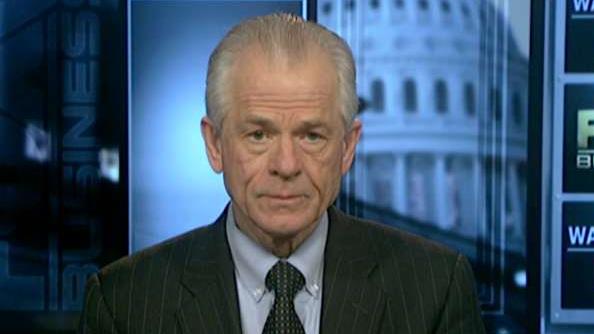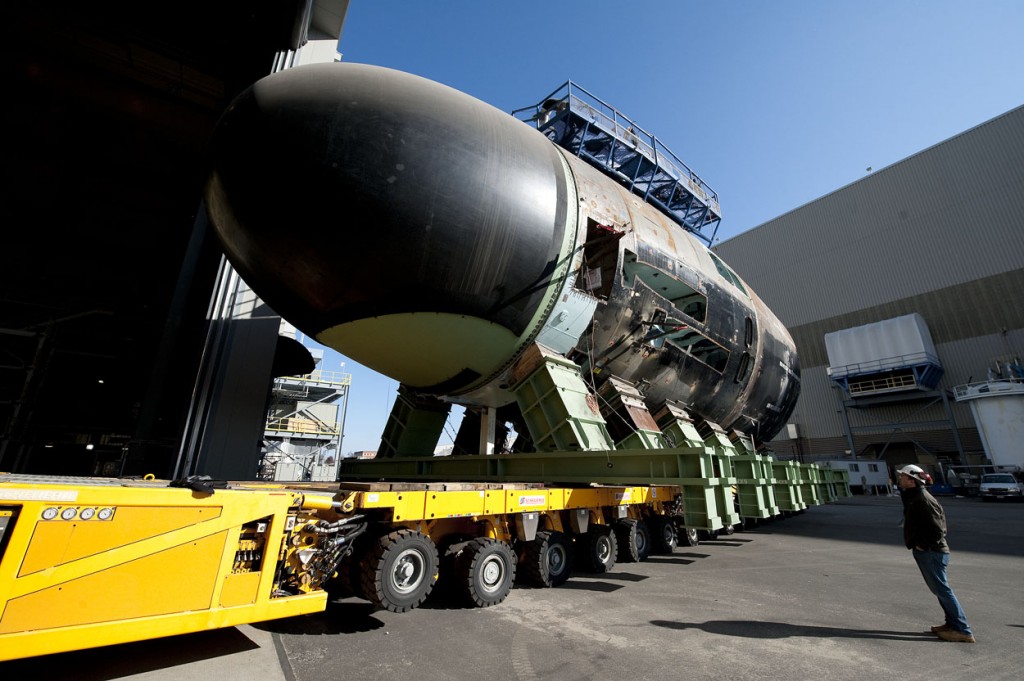
Peter Navarro
WASHINGTON: Is the Defense Industrial Base study required by the Trump Administration’s new Executive Order the groundwork for a new Buy America push or a bold strategic act reminiscent of President Eisenhower’s Solarium project, begun just four months after he took office?
Many of the defense analysts, industry people and acquisition experts I’ve spoken with over the last six months about the Trump’s administration’s plans for the Defense Industrial Base study feared it was the pointy end of a Buy America effort.
After all, Peter Navarro, the White House trade advisor who announced the study, is considered by many to be an apostle of America First economics, designed to boost American manufacturing and punish countries that act in ways thought to harm American interests. Navarro opposed the Trans-Pacific Partnership, promised to levy punishing tariffs against countries whose trade policies are deemed harmful to the U.S. and has generally spoken of much tougher enforcement of existing American trade laws. He is not highly thought of by many mainstream economists.
Navarro’s defense expert, Alexander Gray, comes from a long stint as Rep. Randy Forbes’ senior advisor. Forbes was chairman of the House Armed Seapower subcommittee, and Navy shipbuilding work is reserved for US yards by a raft of protectionist laws and regulations. The assumption by many watching the effort was that the industrial base study would be a first strike in pressing for broader protectionist policies and laws.
The Trump Administration appeared to set the stage for this with its April 9 Executive Order decreeing a 150-day review requiring government agencies assess how well they follow Buy American laws and decide whether they are issuing too many waivers. But I spoke at length with an administration official yesterday afternoon and came away convinced that the goal here really is to mount the first government-wide study of America’s national security resources and the gaps in them to better understand how to cope with a vanishing skilled workforce. This could be a bold strategic stroke.
During World War II America fed and supplied the allied armies of the world. We turned car plants into bomber factories. American logistics were the linchpin of victory over the Axis. Today, we are scrambling to produce enough precision-guided weapons to prosecute relatively low-level conflicts in Afghanistan and Iraq, the official noted.

B-17 production Boeing plant
“What is our national power? What is the industrial base’s capability to meet our national security needs that are broader than just the defense sector?” the official said.
When Eisenhower launched the highly classified Solarium project, named for the place in the White House where it was conceived, it was not a study of America’s industrial base. It was, instead, a three-part examination of the whole of American power and how, when and where it should be applied, so this does not appear to be a Solarium-redux. Instead, this is a more closely defined attempt to assess our the national security outlines of our economic power, where it has gaps and particular strengths and, finally, how we can bolster it.
The Defense Department has specific requirements for what is called surge production of any given weapon system. Contracts are awarded to companies that demonstrate they can build enough weapons to cope with war. But there’s a great deal the Defense Department doesn’t know. “DoD can tell you about how many ships we can churn out in a given year with given funding,” the aide notes. “Labor can tell you about workforce and skill gaps. But none of it is tied together. In the event of a contingency that involves all national power, we need to know what we can do.”
That is the basis for this push.
Navarro said in his statement last Friday that, “the United States has lost over 60,000 factories and more than 5 million manufacturing jobs since the turn of this new century,” causing harm to the defense industrial base. “Today,” he said, “the defense industrial base is facing numerous single-points-of failure, with only one company or facility able to perform critical defense tasks.”
He cited an example from Randy Forbes’ old district: “For example, as a single point of failure, there is just one company in the U.S. that can repair propellers for Navy submarines.”

The USS Warner under construction in Newport News, one of the last two shipyards in the US able to build a nuclear-powered submarine.
But the study, the administration official told me, will be much broader than these single points of failure.Do we have access to enough rare earth minerals and could we get them in event of war? Do we have enough skilled welders able to build submarines or tanks or bombers? (By the way, each of those weapons requires very different knowledge and training by welders.) How quickly could we boost their ranks in event of a crisis. Where could we find pools of skilled labor?
“You ask DoD about workforce shortages, and all they have is anecdotal information from defense companies,” the aide noted. “The Commerce Department has a manufacturing census, but the two departments don’t talk to each other.”
A key effort, the aide told me, will be to build a very detailed database of the companies that contribute to the industrial base. Today, there’s a wealth of information about the defense primes, some information about second tier companies and a relative paucity of knowledge about third tier companies and below.
The study, to be completed in 270 days, will be led by the Pentagon’s Manufacturing and Industrial Base Policy Office. The National Security Council — which the administration aide stressed had absolutely no role in developing the executive order — will probably help coordinate the gathering of information. Navarro will chair a White House national security coordinating committee to lead the effort.
But what of the globalized supply chain, something the Defense Science Board recognized in December 1999 as an inescapable fact of life? Does this White House want to cut the tentacles that reach throughout the world, especially through many of our closest allies?
“Supply chains are global. It’s not just a question of, are we cutting them and bringing them back to the United States. No one is advocating that. That is not what anyone is talking about,” the aide insisted. “What we are talking about is, there may be ways — very strategic ways — to mitigate our risk when we actually understand the supply chains.”
Jordan walks careful line after shooting down Iranian strikes headed to Israel
Amid Iranian criticisim, “Jordanian leaders have been very clear to portray their action as defensive and in protection of their own sovereignty rather than any act in support of Israel, and this is sincere,” an analyst told Breaking Defense.


























